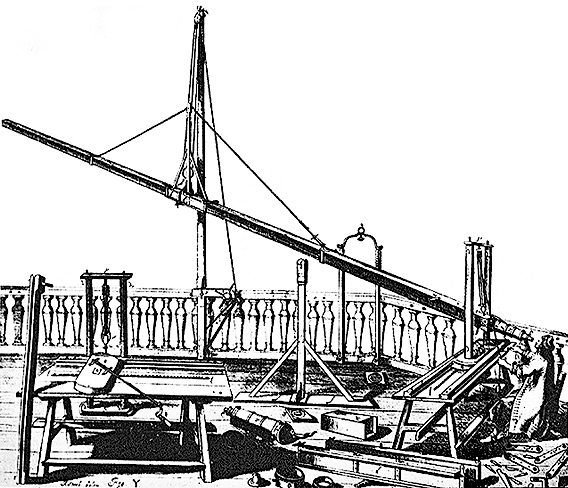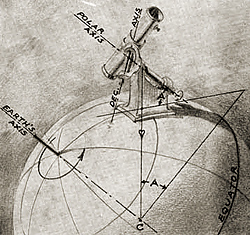Historical design ancestry
The very unwieldy design and shape of Craig's telescope possibly owes much to designs set far back in history - designs that had long since seen their demise overtaken by better technologies.
 |
 |
A drawing of the 150-foot telescope of Hevelius (1673-1679). Notice how similar many of the parts of the telescope are to the Craig Telescope, especially the eyepiece end where a system of pulleys and ropes are employed to alter the angle of the telescope by small amounts in both left and right and up and down.
Picture from Machinae Coelestis Pars Prior of Johannes Hevelius.
|
William Gravatt, the engineer for Craig and his Wandsworth telescope was almost certainly pushed to compromise on the design of the telescope as costs were proving insurmountable - something just had to give.
 |
 |
| |
 |
 |
 |
| |
By the time of the Craig Telescope, German equatorial mounts had been employed on telescopes for some time. |
 |
 |
No doubt he looked to a solution that would in some way allow the huge telescope tube to be mounted in such a way as to make it useable even if it ultimately lead to its abandonment a short while after its completion in 1852.
Looking at the telescopes some 200 years before Gravatt's design shows that they were trying to eke out every last drop of scientific discovery with the technologies available at that time. Since then one successful engineering solution was the German mount allowing the telescope to follow the sky and all celestial wonders as the Earth spun on its axis.
back to top of page >>
|

